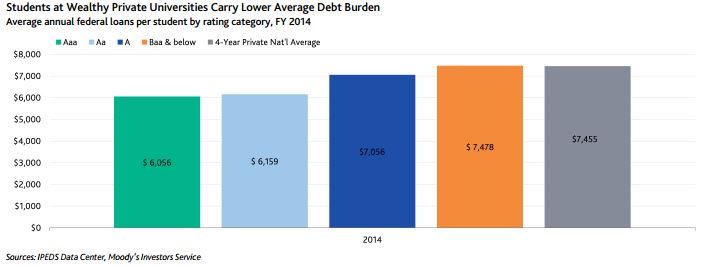You have /5 articles left.
Sign up for a free account or log in.
The average amount of debt per student at private universities rated by Moody’s Investors Service is declining, the ratings agency said in a new report released Thursday.
Debt levels are declining at private universities because those institutions are increasingly discounting tuition and absorbing more educational costs. In essence, the burden of affordability has shifted to universities as students and families remain price sensitive, Moody’s found. Students at wealthy private universities have lower debt levels on average because the institutions they attend have greater financial resources they can commit to priorities like meeting students’ full need or supporting need-blind admissions policies.
“Moody’s-rated private universities have lower debt per student than the national average because they have greater financial resources to support financial aid,” said Eva Bogaty, a Moody’s vice president and senior analyst, in a statement. “Nonetheless, we expect continued financial pressure for universities with more limited resources that need to discount tuition to stay competitive.”
Debt levels were still slightly lower for public university students than for private university students, but the gap is narrowing, Moody’s found. Public university students graduating with debt and with four-year degrees from a Moody’s-rated university in May 2014 would have had an average student debt burden of $27,056. Those who borrowed and graduated with four-year degrees from rated private universities would have seen average debt burdens of $27,806.
Moody’s also projected that growth in public university students’ debt will slow as state operating support stabilizes and tuition increases are limited. But it noted operating support will vary by state and that large cuts in state support could change the trends surrounding student debt.
The Moody’s report comes as student loan debt is under intense public and political scrutiny. Still, the ratings agency found that loans are not deterring demand at universities it rates.
Moody’s noted that default and delinquency rates are lower than the national average at institutions it rates, however. Institutions with low graduation and degree completion rates -- like for-profit colleges and certain community colleges -- have higher default rates and higher credit risks.
Moody's called student loan burden a modest credit risk for colleges and universities it rates.





